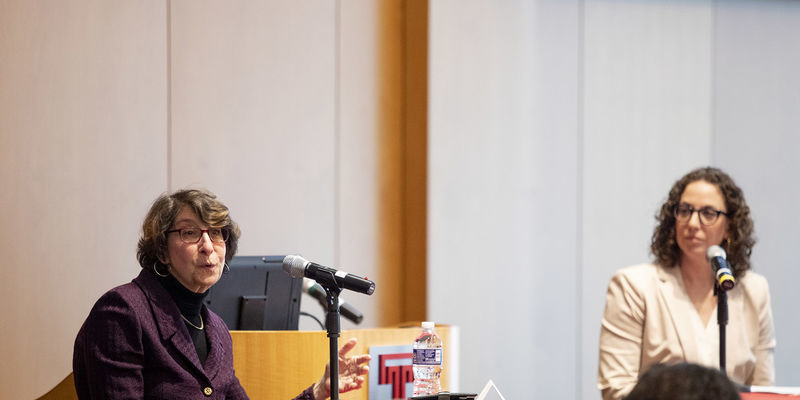Post #MeToo movement, new study finds the sport industry still has work to do
New research from Temple University School of Sport, Tourism and Hospitality Management faculty member Elizabeth Taylor shows how women employees within the sport industry still frequently find themselves the victims of sexual harassment.

By providing a voice to so many who had been silenced, the #MeToo movement of 2017 and 2018 served as an awakening. Finally, those who had been victims of sexual abuse or sexual harassment were able to speak their truth.
Since then, there has been a sea change across several industries, as organizations have adopted policies and implemented procedures designed to prevent this kind of behavior from happening. But according to a new study from Temple University faculty member Elizabeth Taylor, the sport industry remains a place where women employees still frequently find themselves the victims of sexual harassment at disproportionate levels.
Taylor is an assistant professor in the Sport and Recreation Management Department of the School of Sport, Tourism and Hospitality Management, and her research focuses on organizational culture, well-being and holistic development of athletes and sport employees, specifically as it relates to sexual harassment, sexual assault and gender-based violence education.
Her latest study, “‘If this is what working in sports is, I want absolutely no part of it’: Women’s experiences with sexual harassment in sport organizations,” was recently accepted for publication in the Journal of Sport Management, and it takes a close look at the prevalence of sexual harassment within sport organizations and how it further perpetuates gender inequality. Taylor co-authored the scholarly journal article with Katie Sveinson, an assistant professor of sport management at the University of Massachusetts-Amherst, and Laura Burton, a professor of sport management at the University of Connecticut.
“A lot of general business literature is suggesting that instances of overt sexual harassment, sexism and discrimination against women, or what we term gender-based violence, is decreasing, and instances of microaggressions are on the rise. However, that is not what we see on social media and in popular press about the sport industry. So that is why we wanted to do a deep dive here and look at the sport industry,” said Taylor.
As part of the study, Taylor and her colleagues interviewed 21 women who work in the sport industry, including professional leagues and teams, sport media and entrepreneurship. Tenure within the sport industry for participants ranged from nine months to 21 years.
One of the key findings was that every single participant had experienced sexual harassment on some level.
“All of them reported experiencing some form of harassment, and that was a major surprise. Certainly, we expected that some of our participants had experienced things like this, but we did not expect it to be so widespread,” said Taylor, who also serves as Temple’s faculty athletics representative. “Some of them talked more about microaggressions such as crude jokes or inappropriate behavior of that manner. But we had a woman who disclosed that she was raped by a colleague. We had another woman disclose that she was physically assaulted by a co-worker in a public meeting. We also had women who then chose to leave the industry entirely because of their experience."
According to Taylor, one of the other things that her research uncovered was that women who work in sports often feel as if they have nowhere to go. For instance, they are often hesitant to report their situation to human resources, given that HR traditionally has a responsibility to protect the organization and not the person.
Additionally, the sport industry is extremely competitive, and it is a challenge to attain a high-level position. That creates additional stressors for victims in these instances.
“There is this constant tug and pull,” Taylor said. “Should I leave? Should I stay? Should I leave? Should I stay? And then there is this idea of scarcity of these jobs. So, if I leave this job, I'm not going to be able to find another job because jobs in the sport industry are so sought after. So essentially, women become resigned to the fact that they worked so hard to get here that then there’s nothing that they can do about it.”
This notion of the scarcity of sport jobs is an example of a containment strategy, which allows organizations to essentially contain the harassment and prevent victims from reporting it.
Whether purposely or unintentionally, sport organizations often rely on these containment strategies, which is why Taylor and her colleagues recommend that all sport organizations conduct a thorough audit of organizational structures and designs to see where containment strategies may be present.
“I still believe that the sport industry, at its heart, is good. Nothing can bring people together quite like sports. I always use the example of sitting at an Eagles game, and then the Eagles get a pick six. Suddenly, you’re high-fiving everyone and you're hugging people who you don’t even know,” Taylor said. “Sport has the power to bring people together. It has the power to create positive change. But organizations need to lead the charge in ensuring that the sport industry is a welcoming place for all.”


